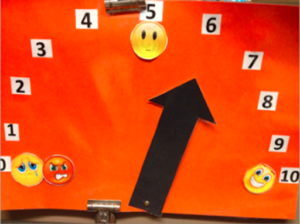Data. I said it. The four-letter word that scares even the most seasoned school counselors. It’s a word that is even scarier for counselors working with younger students. We spend our days putting out fires and wearing many hats – so how can we possibly incorporate one more process into what already seems overwhelming? Why should we spend valuable time on data when we know what we do is effective? We must learn to work smarter and keep it simple. And we must be able to prove the effectiveness of our programs. Think of it as school counseling “Show and Share!”
“We must learn to work smarter and keep it simple. And we must be able to prove the effectiveness of our programs.”
If you’re a K-6 school counselor, I bet you’ve fielded some interesting and sometimes patronizing questions from people about your daily responsibilities. We’ve all been to that dinner party when an acquaintance laughs and says, “Oh, so you talk about arguments on the playground all day?” We smile, gently correct them, and give our brief elevator speech about a school counselor’s purpose. But we know that our programs include more than “hugs and hankies.” There are simple, easy ways to incorporate data collection into your program which allow you to meet student needs and show your program is comprehensive, data-driven, and effective. If it all seems overwhelming, pick one strategy and try it! Let’s break it down by data type.
Student Choice Data

Student Choice Data answers the question: Did students make better choices because of the school counseling program and/or specific interventions? Sometimes this impact can be hard to quantify for counselors working with younger grade levels. Our students don’t get to choose more rigorous courses like high schoolers. Elementary students don’t often have homework like middle and high school students. Behavior data is sometimes recorded inconsistently. So how can we show that student choices and behaviors are different because of our programs?
Choosing to Complete Work:
If your students are assigned homework but it is not logged into a data system like PowerSchool, you can still gather data from teachers. Homework Tally Days are random data collection days when you ask teachers to share how many students completed the homework as assigned. You can have these Homework Tally Days once a month, once a quarter, or more frequently. Teachers can fill out a hard copy paper like this one or enter their data in a shared spreadsheet like this. You could also adjust this process and collect classwork completion data. Did the student(s) complete classwork as assigned?
Sample goal:
Student Benchmark: Students will complete at least 85% of classwork as assigned during Q2.
Student Group: Executive Functioning Counseling Group Participants
Number of Students: 5
Data Point: Classwork Tally Data gathered from teachers once a month.
Sample Goal:
Student Benchmark: 75% of students will “Meet Expectations,” for the CCR Standards in PowerSchool by the end of second semester.
Student Group: Executive Functioning Counseling Group Participants
Number of Students: 6
Data Point: CCR Standards in PowerSchool
Making Expected Behavior Choices:
Behavior data is another way to show your impact on student choices. Your district or school tech guru can help you run a report from your student information system. This report can show you repeat offenders, where/what setting has the most discipline issues (recess? bus?), and if there seem to be high frequency periods during the school year. You can also disaggregate this data based on race, gender, lunch status, neighborhood, and more. Your IT specialist is now your new best friend! If you have difficulty obtaining this data report, or find that staff isn’t logging data consistently, this could be the catalyst for conversations about systems and protocols in your building. In the meantime, you can use an old-school Office Referral Tally Sheet as a way for office staff to record student visitors. Keep this paper in a central location where all office staff can help document office visitors while you are out and about in the building.
Sample Goal:
Student Benchmark: 85% of students will have zero office referrals for the school year.
Student Group: Entire sixth grade Class of 2029
Number of Students: 350
Data Point: PowerSchool Log Entry Behavior Data
If your school operates a school-wide behavior system like PBIS or another incentive program, use that data! Compare data across grade levels, by classroom, by gender, etc. This is a great way to ensure equity and find out if you have any gaps in your data.
Sample Goal:
Student Benchmark: First grade students will have zero office referrals 60% of the time.
Student Group: First grade students Class of 2033.
Number of Students: 100
Data Point: Star Data Collection Sheet with daily office referral data.
(grade level earns a star for 0 office referrals that day)
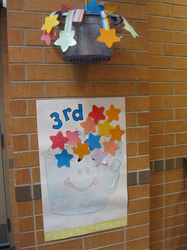
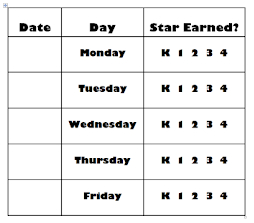
Self-Report Data
Self-Report Data is a great way to gauge how students are feeling and if they are retaining information. I don’t, however, recommend that you use self-report data for your professional evaluation goals or program goals. I made that mistake once – and never again. My goal was: 70% of third and fourth graders will report that they talked with their school counselor about jobs that interest them this school year. Although I met with 100% of students on two occasions, only 56% of students indicated this in their self-report survey data. This indicated there was a flaw in the way the question was asked, and the activity was not meaningful or memorable.
I have since learned for our younger students, self-report data is best for scaling activities and as a way for students to communicate the intensity of their feelings. Monitor scaling data for individual and small group counseling meetings to determine if interventions have impacted confidence, stress, social skills, and more. Scaling activities can be as simple as drawing a number line on a piece of paper or white board. Or, for more crafty counselors, make hands-on rating scales with velcro dots, pipe cleaners, or other materials. Write down and save these numbers each session and use this data to help inform your program and counseling interventions.
These pipe cleaner number lines double as math manipulatives.
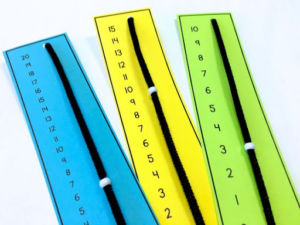
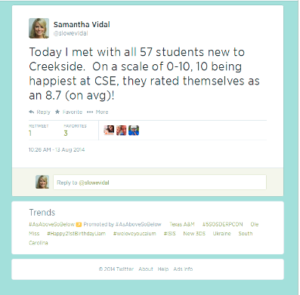
Sample Goal:
Student Benchmark: At least 6/8 students will decrease feelings of stress during weekly spelling tests.
Student Group: Test anxiety counseling group
Number of Students: 8
Data Point: Self-report data from scaling worksheet
“It’s time to show what we know and share our successes!”
In part two of this series, I will explore how to incorporate teacher feedback, group counseling pre/post tests, and attendance data into your school counseling program. Remember, it is not about changing what you do– but how you do it. Work smarter, not harder! We already know our programs and interventions are effective and impact student achievement. It’s time to show what we know and share our successes!


